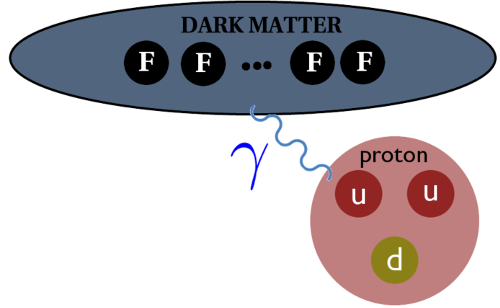Research — Composite dark matter
 |
Summary: It is a remarkable possibility that the dark matter discovered by many different observations of the large-scale universe could consist of composite particles that contain electrically charged constituents. These constituents interact with light but the composite particles they produce are dark, much like electrically charged quarks produce the electrically neutral neutron. Lattice calculations have provided predictions for how such composite dark matter may be seen in ongoing experiments using large underground detectors. Work is in progress to predict additional observable signatures of composite dark matter at high-energy particle colliders and future gravitational wave observatories. Image: A cartoon illustrating dark matter interacting with a proton, by exchanging a photon that couples to the internal structure of the neutral composite dark matter particle. This internal structure is described by electromagnetic form factors, which lattice calculations can determine to predict the rate with which composite dark matter will produce observable signatures in large underground detectors. Related publications: arXiv:2311.10243, arXiv:2303.01149, arXiv:2212.09199, arXiv:2112.11868, arXiv:2006.16429, arXiv:2002.00187, arXiv:1904.09964, arXiv:1503.04205, arXiv:1503.04203, arXiv:1402.6656, arXiv:1309.1206, arXiv:1301.1693 |
A longer discussion of this project will soon be completed.
Last modified 27 November 2023


